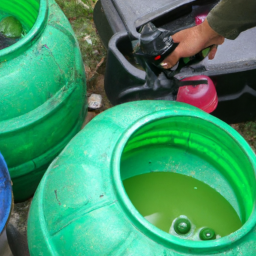How To Fill A Paintball Tank At Home Tips Tricks
Table of Contents []
How To Fill A Paintball Tank At Home
Introduction
Filling a paintball tank at home may seem like a daunting task, but with the right supplies, it is a relatively simple process. In this article, we will discuss eight to twelve topics related to the process of filling a paintball tank at home. These topics include understanding the applicable rules and regulations, gathering the necessary supplies, setting up the environment, connecting to a compressible air source, filling the tank, verifying the proper pressure level, sealing the tank, safely removing the tank, and storing the tank after use. We will also provide popular subtopics related to each main topic for a deeper understanding and detailed descriptions.
Understanding the Rules and Regulations
The first step in filling a paintball tank at home is understanding the rules and regulations applicable to your specific situation. Depending on where you live, various regulations may apply to the creation and use of pressurized tanks, particularly when using a large air compressor. In the US, regulations are defined by the Consumer Product Safety Commission, while in other countries, such as the United Kingdom, the Department of Transport specializes in regulations related to tanks using compressed air.
Gathering the Necessary Supplies
Before attempting to fill a paintball tank at home, it is important to gather the necessary supplies. This includes the tank itself, a tank regulator, an air hose, an air source, and safety glasses to protect your eyes from any potential accidents. It is also important to ensure that all the components are compatible with one another.
Setting Up The Environment
Once the necessary components have been gathered, the next step is to set up the environment for the safest use of compressed air. This includes ensuring that the room is well ventilated, that there are no potential sources of fire in the vicinity, and that there is sufficient room for working with the tank.
Connecting to a Compressible Air Source
The next step is to connect the air hose to a compressible air source. This requires connecting a threaded air hose to a pre-pressurized air source. Common air sources include tanks containing nitrogen, argon, and carbon dioxide, industrial-sized air compressors, and dive tanks filled with pressurized air.
Filling the Tank
Once the tank is connected to an air source, it is then time to fill the tank with air. This requires adjusting the regulator to the allotted pressure level, which varies depending on the type of tank and the country it is used in. It is important to ensure that the pressure level is maintained throughout the filling process.
Verifying Proper Pressure Level
Once the tank has been filled with air, it is important to verify that the pressure level is correct. This is done by using a pressure gauge to measure the pressure in the tank and ensuring that it is equal to the designated pressure level. Once the pressure level has been verified, the tank can be sealed.
Sealing the Tank
The next step is to seal the tank. This involves using an o-ring to ensure an airtight seal around the air hose. After the seal is secured, the air hose should be removed from the tank and the tank should be allowed to sit for a few hours before any further use.
Safely Removing the Tank
Once the tank has been sealed and the air hose has been removed, it is important to safely remove the tank from the environment. This requires using an anti-static carrying bag to protect the tank from any potential static electricity build-up and to protect the tank from any potential shocks or other accidents.
Storing the Tank After Use
The final step is to store the tank after use. This involves placing the tank in a cool, dry place to ensure that the pressure is maintained over time. It is also important to inspect the tank periodically to ensure that the o-ring is still in good condition and that the tank is not leaking.
Conclusion
Filling a paintball tank at home may seem complicated, but with the right information and supplies, it is actually a relatively simple process. Starting with understanding the applicable rules and regulations, gathering the necessary supplies, setting up the environment, connecting to a compressible air source, filling the tank, verifying the proper pressure level, sealing the tank, safely removing the tank, and storing the tank after use, the process of filling a paintball tank at home is not difficult to follow. With a little research and knowledge, anyone can fill their own paintball tank at home.

Previous Page
Next Page
